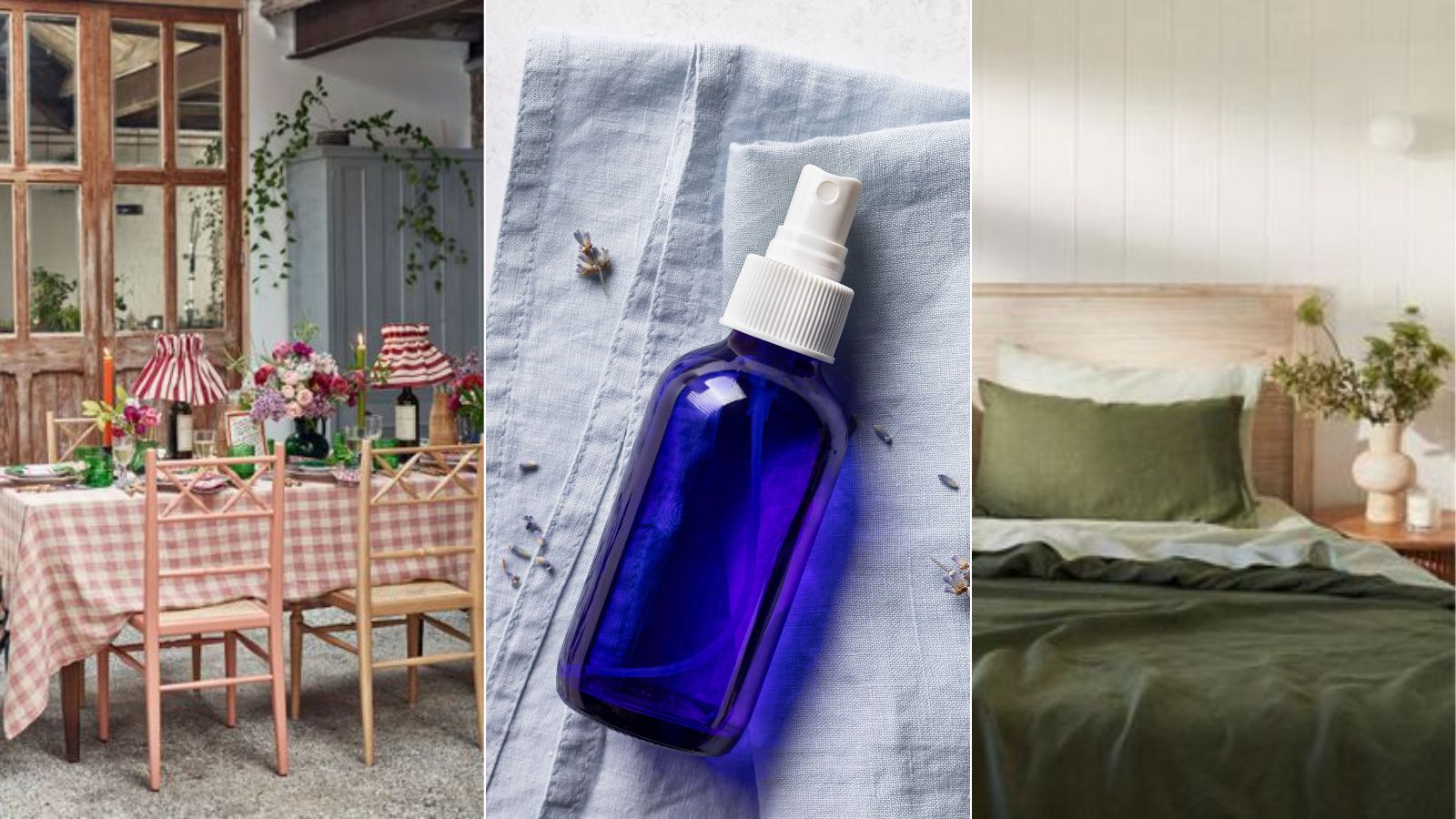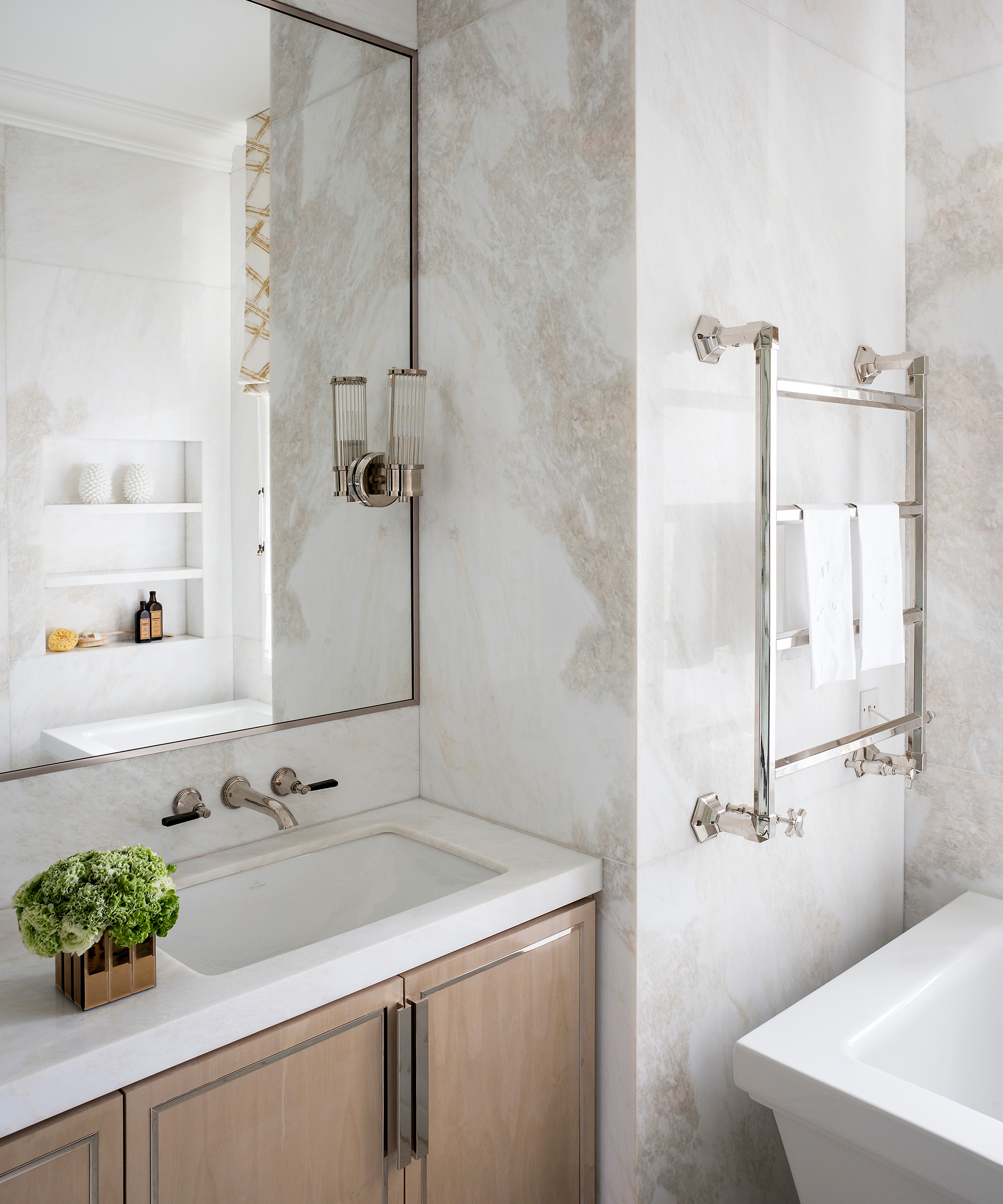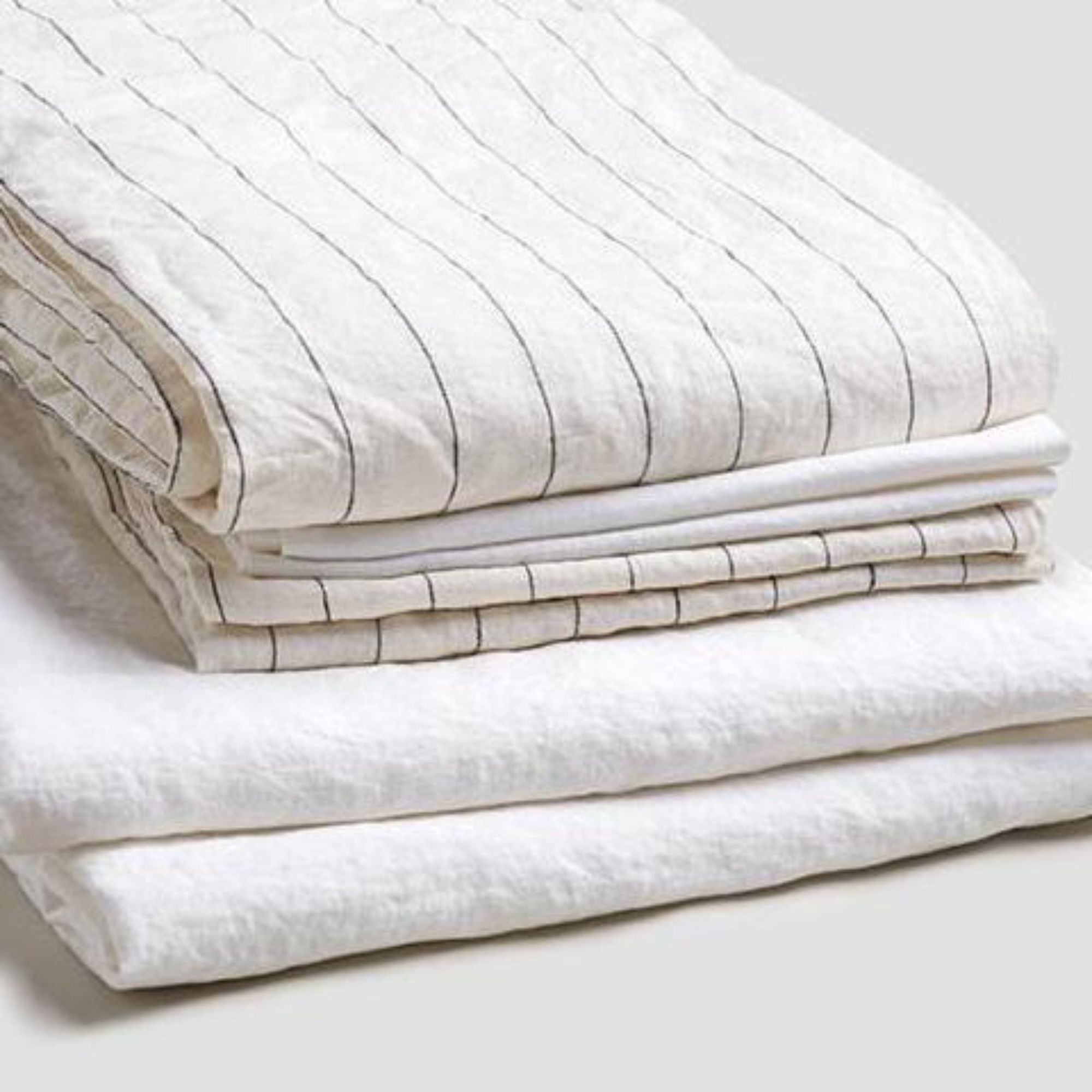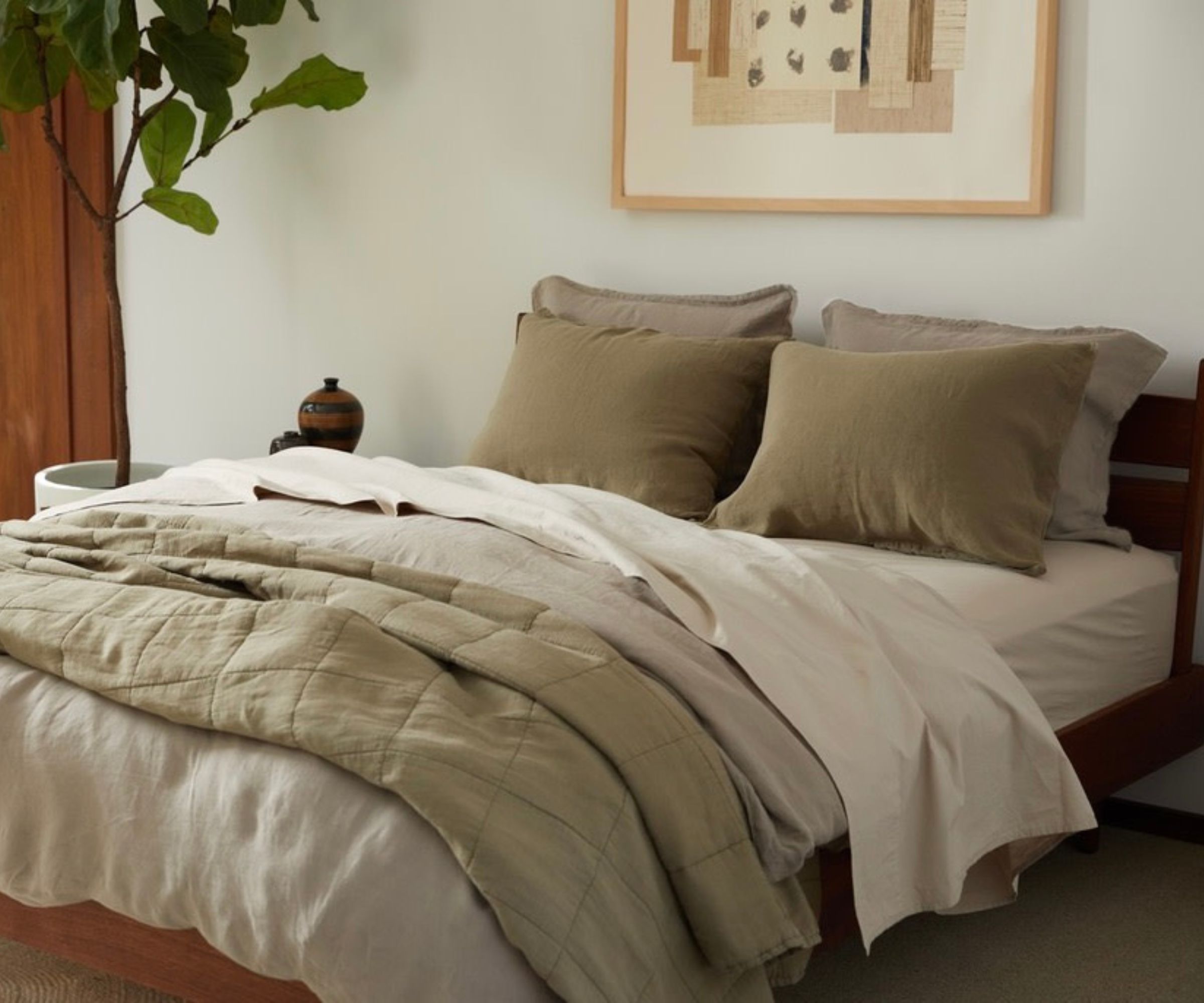
There's nothing quite like a linen spray to subtly infuse fragrances into your home. However, many commercial sprays can be filled with chemicals, and it can be challenging to find a fragrance you truly enjoy. That's where homemade linen sprays come in.
What better way to make your home smell nice than with a fragrance tailored to your personal preferences, including your preferred scent and intensity level? Creating a natural linen spray is a chic DIY project that's not only cost-effective but also customizable and eco-friendly. It's a great way to refresh your linen bed sheets, towels, tablecloths, and more with a pleasant deodorizing scent.
Whether you're a fragrance expert or a novice looking for a new way to add a personalized scent to your linens, this is a simple yet effective method. Here's how to create your own DIY linen spray, according to the experts.
How to make DIY linen spray
Creating your own custom fragrances is incredibly rewarding, and a DIY linen spray is an item pro organizers always have in their linen closets.
While this method may require a bit more effort upfront compared to store-bought options, once you've mastered it, spritzing your sheets and linens becomes a simple and satisfying task.
Ingredients

- 1 ml (about 20 drops) of a fine essential oil of your choosing
- 5 oz. 99% isopropyl alcohol (or) 2 tablespoons of baking soda
- A spray bottle, such as this one from Amazon
Optional
- Polysorbate 20 for emulsification (we like Polysorbate 20 by Velona from Amazon)
- 4 oz. lavender essential water
Method

Creating your very own DIY linen spray couldn't be simpler. Once you have gathered your ingredients, follow these five easy steps:
1. Begin by filling 3/4 of your spray bottle with distilled water.
2. If you're using a single essential oil, add 20 drops to the spray bottle. For multiple essential oils, add 10 drops of each oil. If you choose to use lavender essential water, incorporate it at this stage.
3. Next, add 2 tablespoons of baking soda or 5 oz. of isopropyl alcohol to your spray mixture.
4. Shake the bottle thoroughly. You should do this before each use, as the oil tends to separate from the water and alcohol.
5. Although you can use this spray immediately, Keely Smith, lead interior designer at JD Elite Interiors, recommends letting it sit for two weeks, and shaking it daily. This extended maceration time enhances the extraction of compounds from the oils.
If desired, you can also add a few drops of polysorbate to bind the oils and water in the mixture, ensuring the spray works effectively.
Why this combination is so effective

'You can use distilled water and essential oils like lavender oil, eucalyptus oil, peppermint oil, or lemon oil,' explains Jamie Mitri, a chemical and environmental engineer at Moss Pure. 'Lavender provides a fresh scent, while peppermint oil and lemon oil act as natural preservatives to help keep your sheets clean.'
Moreover, the addition of a deodorizing agent such as baking soda or isopropyl alcohol serves a dual purpose – neutralizing odors while imparting a subtle, clean scent. This strategic use of a deodorizing substance not only refreshes your linens but also contributes to a welcoming and clean fragrance.
Additionally, 99% isopropyl alcohol ensures rapid evaporation, resulting in a light and airy spray that enhances the extraction of aromas from essential oils. Try this isopropyl alcohol on Amazon.
Pros

Affordability
Aside from its delightful fragrance and odor-neutralizing capabilities, creating a DIY linen spray is an economical choice compared to buying commercial products, especially if you already have some of the ingredients on hand.
Customization
A DIY spray also offers easy customization, allowing you to tailor each bottle to your personal preferences. These sprays are a handy way to make your home smell nice when you're sensitive to fragrance because you can control the scent's intensity and fragrance type, giving you the power to manage the ingredients.
Sustainability & Pest Control
'Some homemade sprays have natural insect-repelling properties, providing eco-friendly protection for customers with pest concerns, helping them avoid harsh chemical treatments,' explains Keeley Smith. 'Certain essential oils like peppermint, cinnamon, citronella, or lemongrass contain compounds that insects find highly unappealing. When used in a linen spray, their potent fragrances mask food and shelter odors, deterring unwanted insects from infesting treated materials.'
What's more, using natural ingredients is a great way to be sustainable at home.

$345 at Magic Linen

$363 at Piglet in Bed

$239 at Brooklinen
Cons

Short Shelf Life
One of the downsides to homemade sprays is that they may lack preservatives, leading to a shorter shelf life and the potential for bacterial growth.
'While adding a light mist of scent is enjoyable, over spraying cushions, curtains or clothes over time can cause a buildup of lingering fragrance,' explains Keeley Smith. 'This residue is difficult to completely remove by laundering alone.
'I've seen homeowners disappointed when favorite fabrics could no longer be faintly detected due to an excess of lingering scents buried deep in fibers. Moderation is key to prevent this issue.'
Potential For Stains
Additionally, some essential oils may stain fabrics and can cause sensitivities on the skin. When in doubt, test your DIY spray on a small, discrete area first and immediately cease use if you experience skin irritation.
FAQs
How do you test if a linen spray will stain materials or cause sensitivities on the skin?
'When using linen spray, I advise a standard five-part patch test: on an inconspicuous fabric swatch, on skin, combining oils, with/without dilution, and after drying time,' recommends Keely Smith, lead interior designer at JD Elite Interiors.
'I've had expensive mistakes from ineffective patch testing – like when an undiluted blend ruined silk cushions! Proper testing saves homeowners stress and money in the long run.'
This DIY approach to home fragrance offers complete transparency and customization, making it a preferred choice for aroma enthusiasts. This task is ideal for those who enjoy scent crafting and have a bit of patience. Incorporating a DIY linen spray into your cleaning routine ensures a constant supply of fabric freshener, keeping your home consistently fragrant.







